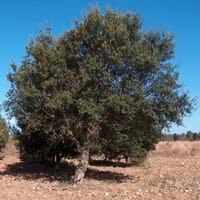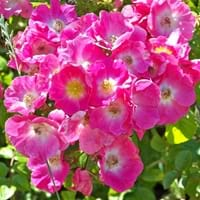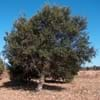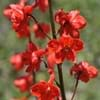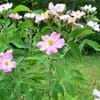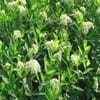Life Span
Perennial
Annual and Perennial
Origin
China
Hybrid origin
Types
Not Available
it is a type of rose
Habitat
Hills, Lower slopes, open Woodlands
Not Available
USDA Hardiness Zone
4-8
5-8
Sunset Zone
A3, 1a, 1b, 2a, 2b, 3a, 3b, 4, 5, 6, 7, 8, 9, 14, 15, 16, 17, 18, 19, 20, 21
A1, A2, A3, H1, H2, 1a, 1b, 2a, 2b, 3a, 3b, 4, 5, 6, 7, 8, 9, 10, 11, 12, 13, 14, 15, 16, 17, 18, 19, 20, 21, 22, 23, 24
Habit
Upright/Erect
Vining/Climbing
Minimum Width
Not Available
Flower Color
Light Green
White, Pink
Flower Color Modifier
Not Available
Not Available
Fruit Color
Brown, Light Green, Lime Green
Non Fruiting Plant
Leaf Color in Spring
Green, Light Green
Dark Green
Leaf Color in Summer
Green, Light Green
Dark Green
Leaf Color in Fall
Red
Dark Green
Leaf Color in Winter
Not Available
Light Green
Plant Season
Spring, Summer, Fall, Winter
Summer
Sunlight
Full Sun, Partial Sun, Partial shade
Full Sun, Partial Sun
Growth Rate
Medium
Medium
Type of Soil
Clay, Loam, Sand
Loam, Sand
The pH of Soil
Acidic, Neutral, Alkaline
Acidic, Neutral
Soil Drainage
Well drained
Well drained
Bloom Time
Late Spring, Early Summer
Summer, Late Summer
Tolerances
Drought, Salt
Drought
Where to Plant?
Ground, Pot
Container, Ground, Pot
How to Plant?
Seedlings
Divison, Seedlings
Plant Maintenance
Low
Medium
Watering Requirements
Average Water Needs, Requires regular watering, Requires watering in the growing season
Water Deeply, Water in morning to avoid prompting diseases
In Summer
Lots of watering
Lots of watering
In Spring
Moderate
Moderate
In Winter
Average Water
Average Water
Soil pH
Acidic, Neutral, Alkaline
Acidic, Neutral
Soil Type
Clay, Loam, Sand
Loam, Sand
Soil Drainage Capacity
Well drained
Well drained
Sun Exposure
Full Sun, Partial Sun, Partial shade
Full Sun, Partial Sun
Pruning
No pruning needed
Prune after flowering, Remove damaged leaves, Remove dead branches
Fertilizers
No fertilizers needed
Fast release fertilizer, Fertilize in early spring, Fertilize three times a year
Pests and Diseases
Red blotch, Spider mites
Aphids, Black Spot, Caterpillars, Downy mildew, glasshouse red spider mite, Insects, Leaf Hoppers, Powdery mildew, rose leaf-rolling sawfly, Rust, Scale
Plant Tolerance
Drought, Salt
Drought
Flowers
Insignificant
Showy
Flower Petal Number
Single
Single
Foliage Texture
Medium
Medium
Foliage Sheen
Matte
Glossy
Attracts
Birds
Not Available
Allergy
Asthma
Not Available
Aesthetic Uses
Landscape Designing
Showy Purposes, Used for decorating walls, fences, gates, hedges, etc.
Beauty Benefits
Not Available
Perfumes
Environmental Uses
Air purification, Forms dense stands, Nesting sites for birds, No fertilizer, pesticides, or herbicides needed, Prevent Soil Erosion, Shadow Tree, Windbreak
Air purification
Medicinal Uses
No Medicinal Use
No Medicinal Use
Part of Plant Used
Bark, Stem
Flowers, Whole plant
Other Uses
Used as firewood, Used for woodware, Used in biomass, Used in construction, Used in Furniture, Wood is used for ship building, Wood is used in construction, Wood log is used in making fences
Used as Ornamental plant
Used As Indoor Plant
No
Yes
Used As Outdoor Plant
Yes
Yes
Garden Design
Cutflower, Feature Plant, Foundation, Hedges, Mixed Border, Screening, Wind Break
Cutflower, Feature Plant, Groundcover, Hedges, Mixed Border, Rock Garden / Wall, Topiary / Bonsai / Espalier, Vine
Botanical Name
EUONYMUS phellomanus
ROSA 'American Pillar'
Common Name
Cork Oak
Climbing Rose, Rambling Rose
In Hindi
कॉर्क ट्री
Climbing Rose
In German
Cork Tree
Kletterrose
In French
Arbre de Cork
escalade Rose
In Spanish
Árbol de corcho
Rose que sube
In Greek
Cork Tree
αναρρίχηση Rose
In Portuguese
Cork Tree
Rosa de escalada
In Polish
Cork Tree
Climbing Rose
In Latin
Cork ligno
Rosa scandere
Phylum
Anthophyta
Magnoliophyta
Class
Dicotyledonae
Magnoliopsida
Family
Celastraceae
Rosaceae
Clade
Angiosperms, Eudicots, Rosids
Not Available
Tribe
Mirini
Not Available
Subfamily
Mirinae
Not Available
Number of Species
Not Available
Not Available
Importance of Cork Tree and Climbing Rose
Want to have the most appropriate plant for your garden? You might want to know the importance of Cork Tree and Climbing Rose. Basically, these two plants vary in many aspects. Compare Cork Tree and Climbing Rose as they differ in many characteristics such as their life, care, benefits, facts, etc. Every gardener must at least have the slightest clue about the plants he wants to plant in his garden. Compare their benefits, which differ in many ways like facts and uses. The medicinal use of Cork Tree is No Medicinal Use whereas of Climbing Rose is No Medicinal Use. Cork Tree has beauty benefits as follows: Not Available while Climbing Rose has beauty benefits as follows: Not Available.
Compare Facts of Cork Tree vs Climbing Rose
How to choose the best garden plant for your garden depending upon its facts? Here garden plant comparison will help you to solve this query. Compare the facts of Cork Tree vs Climbing Rose and know which one to choose. As garden plants have benefits and other uses, allergy is also a major drawback of plants for some people. Allergic reactions of Cork Tree are Asthma whereas of Climbing Rose have Not Available respectively. Having a fruit bearing plant in your garden can be a plus point of your garden. Cork Tree has showy fruits and Climbing Rose has showy fruits. Also Cork Tree is not flowering and Climbing Rose is not flowering . You can compare Cork Tree and Climbing Rose facts and facts of other plants too.
